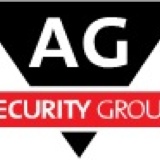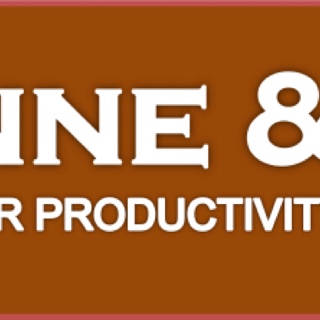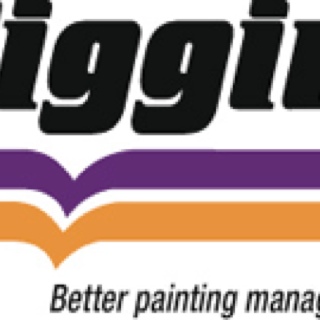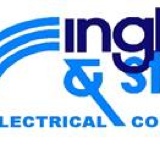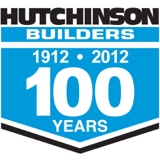Information
-
Schneider Electric Person in Charge (PIC)
-
Customer Name
-
Customer Contact/Title
-
Contact Phone number
-
Date
-
Job Number
-
Customers Escalation/Emergency Contact
-
Scope of Work
-
Project Duration (Days, hours)
-
Site Work Permit System in Place? If YES, follow site rules
Team Members
Schneider Electric Project Team Members
-
FSR #1
-
FSR #2
-
FSR #3
-
FSR #4
-
FSR #5
-
FSR #6
-
FSR #7
-
FSR #8
Subcontractors
-
Subcontractor #1
-
Subcontractor #2
-
Subcontractor #3
-
Subcontractor #4
Pre-Service Safety Meeting Checklist
-
WARNING! A Pre-Service Safety Meeting MUST be completed prior to beginning the job and repeated whenever new persons arrive to support the job!
-
Other Items may need to be reviewed, depending on the nature of the work, the site, and other factors.
-
Relevant information about electrical systems, including maintenance proceedures/practices, one line diagrams, facility arc flash assessments, known problems or issues, obtained from customer and reviewed.
-
Site specific orientation/training completed
-
Is Schneider Electric responsible for Switching? A Switching Plan must be completed by SE and agreed upon by the customer.
-
If YES, Complete Switching Plan
-
Is Utility Outage Required? Is Schneider Electric part of the Utility LOTO program? Did we receive a cert or other means identifying deenergization?
-
Information on presence of, and potential exposure to, hazardous materials (e.g., asbestos, SF6, lead) obtained from customer.
-
Document on Hazard Assessment
-
Safety Data Sheets available for hazardous materials to be brought onto customer site.
-
If YES, include on Hazard Assessment
-
Subcontractors provide all required documentation. See Background section ii.2 for documents provided.
-
Subcontractors reviewed and signed off on written Hazard Assesment and work plan.
-
Manufacturing employees approved for work; briefed on and agreed with work scope; signed off on written Hazard Assessment and Work Plan.
-
Refer to Hazard Assessment and Written Work Plan
-
Other Unqualified employees briefed and signed off on written Hazard Assessment and work Plan
-
Refer to Hazard Assessment and Written Work Plan
-
Meeting schedule established (e.g., daily toolbox).
-
Contacts and communication protocols reviewed and agreed upon.
-
Incident reporting/response expectations and protocols reviewed and agreed upon.
-
Reviewed Emergency Action Plan, including Emergency Egress Route. Emergency Contact Name and Phone #: Record under job scope.
-
Subcontractors provided all required documentation and briefed on SE<br>requirements.
-
Need for coordination of work with other employees<br>determined and appropriate protocols established.
-
If utility disconnect is required, meeting with utility representative completed,<br>procedure agreed upon and documented as part of LOTO.
-
Provide comment on LOTO Checklist, STEP 4: ISOLATE
-
Is the work performed above 6 feet (2m)
-
If YES, Fill out Fall Risk Hazard sheet
-
Safety procedures such as LOTO, MOPS, etc. reviewed with all supporting<br>team members. If LOTO process is considered complex as defined by SE460,<br>a written procedure has been developed (see Complex LOTO).
-
Site safety requirements reviewed (hard hat, safety glasses, reinforced toe<br>footwear, high-visibility vest).
-
Document on Hazard Assessment
-
Does the work involve climbing access ladders to another level or<br>work from A frame or platform ladder
-
If YES, Fill out Ladder Risk Assessment
-
Location of emergency power off button(s), fire extinguisher/AED/emergency wash location(s) identified and reviewed with the team.
-
Equipment documentation (Field Service Bulletins, Field Alerts, Field Manuals, Checklists, Statement of Work) reviewed with all supporting team members.
-
Document on Written Work Plan, as required.
-
If an ergonomic hazard exists, the Ergonomic Hazard<br>Assessment has been completed
-
If YES, Fill out Ergonomic Hazard Assessment.
-
Customer's expectations reviewed by the SE Person in Charge (PIC) with all<br>supporting team members.
-
If a fall hazard exists, the Fall Hazard Assessment has been<br>completed.
-
Complete Fall Hazard Assessment, if required
-
Personal Protective Equipment Inspection: PPE and tools have been inspected prior to use and determined appropriate for the work to be performed.
-
Customer system grounds/utility grounds applied; personal protective grounds properly sized, located and applied.
-
Document on LOTO Checklist, STEP 6: GROUNDING
-
Hazards and expectations reviewed by the SE PIC with all supporting team members (daily or at the start of each shift).
-
"Stop work" authority and procedures agreed upon and documented.
-
If a shock hazard exists, a Shock Hazard Analysis has been completed, including Arc flash PPE available and Fault Current Analysis.
-
Document on Hazard Assessment as required.
-
Communication completed with personnel working upstream or downstream of electrical equipment
-
Refer to Table 1 Approach boundaries.
-
If Arc Flash hazard exists, an Arc Flash Hazard Analysis has been completed, including Arc flash PPE available and Fault Current Analysis
-
Refer to SE425A Table 2A-1: Arc Flash PPE ID (AC-DC)
-
Identification of any unqualified electrical workers or new<br>employees completed.
-
ELECTRICAL HAZARD! Always place equipment in an electrically safe condition (LOTO). Always follow all applicable Schneider Electric safety procedures and manufacturer recommendations when using test equipment. Only qualified/competent personnel with the applicable Electronically Qualified Employee designation, which have demonstrated knowledge of/with the equipment, its operation and mitigation of associated hazards, shall be permitted to perform this task. Information supplied in this document is for informational purposes only and this should not be considered a training document. It is the responsibility of every employee to assess all hazards and perform work in a safe manner.
Type of Electrical Work
-
CONTROLS: SE425 Must Be Followed At All Times
-
De-energized:
-
Approach boundaries/barricade set; lockout/tagout De-energized: procedures followed.
-
Energized and not exposed:
-
Use of PPE; approach boundaries/barricade set
-
Energized and exposed (limited to calibration/electr. measurement/troubleshooting):
-
Use of PPE; approach boundaries/barricade set
-
Utilize Arc Flash Calculator, as required
Site Hazards
-
For identified hazards, use the Hazard Assessment tab to specify control measures using the hazard assessment form
-
Shock (Shock Hazard Anlys. Req'd)
-
Arc Flash (AF Hazard Anlys. Req'd)
-
Overhead or Underground Utilities
-
Back Feeds/Induction
-
Aerial Lift
-
Chemicals
-
Cold Stress
-
Compressed Gas Cylinder
-
Cranes and Hoists
-
Cutting
-
Ergonomic
-
Excavation/Trenching
-
Eye Injury
-
Extreme Weather
-
Fall Protection
-
Flammable/Combustible Material
-
Hand/Foot Injury
-
Heat Stress
-
Heavy Equipment
-
Lifting Heavy Loads
-
Lighting/Illumination
-
Lockout/Tagout
-
Loud Noise
-
Portable Power/Hand Tool
-
Slips, Trips, Falls
-
Thoroughfares (Traffic)
-
Urban Environment
-
Welding and Cutting
-
Poisonous Plants
-
Animals
-
Other:
-
Describe
-
Other:
-
Describe
-
Other:
-
Describe
Sign Off
-
Schneider Electric Person in Charge
-
Customer
-
Schneider Electric Subcontractor






